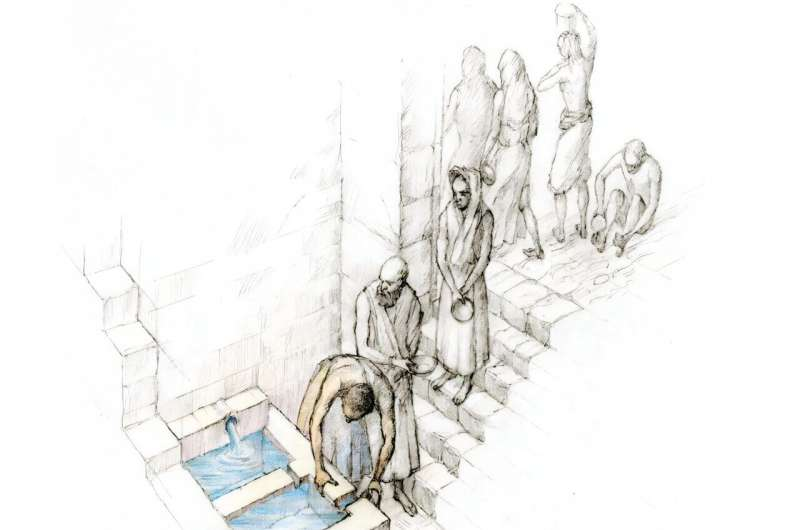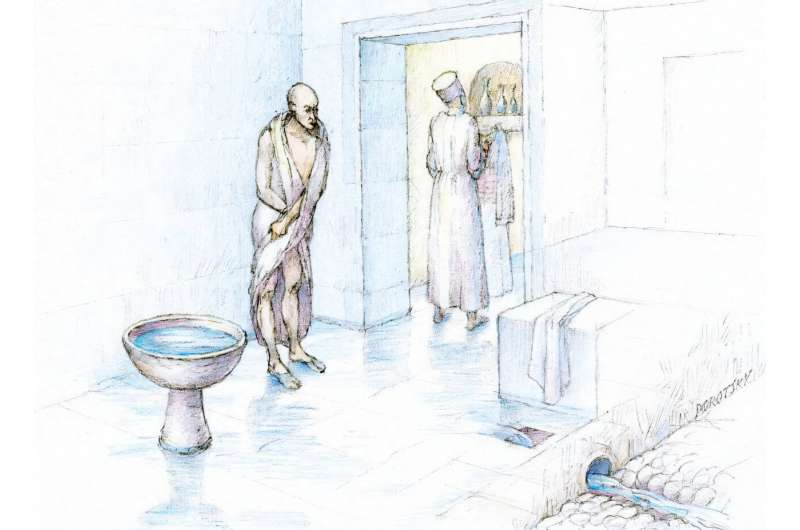A newly published study by Dr. Levana Tsfania-Zias in the journal Levant has unveiled fascinating insights into how ancient Phoenicians may have incorporated ritual bathing into their religious practices at the sacred sanctuary of Tel Dan — a site that flourished for nearly 500 years.
A Sanctuary on the Edge of the Jordan
Tel Dan, perched atop a massive Middle Bronze Age rampart about 12 kilometers from modern Qiryat Shemona in northern Israel, has long intrigued archaeologists. First excavated by Avraham Biran from 1969 to 1994 and later by David Ilan and Yifat Thareani for the Nelson Glueck School of Biblical Archaeology at Hebrew Union College in Jerusalem, the site has yielded clues about ritual life stretching from the Hellenistic to the Roman periods.
At its heart stands a temple with a rectangular plan: an entrance porch, a central cella (main worship hall), and an adyton (the most sacred inner chamber).
During a 1976 excavation season, a carved limestone slab inscribed in Greek and Aramaic was unearthed. It reads: “To the God who is in Dan, Zoilos made a vow. In Dan(?) a vow of Zilas to God.” While scholars still debate the deity’s identity — some linking it to the Israelite god, others to an unknown local divinity — it is clear that worship here involved acts of ritual cleansing, a hallmark of Phoenician and wider Near Eastern religious traditions.
Ritual Bathing: A Rare Glimpse into Phoenician Purity Rites
After the Seleucid conquest and the destruction of the original temple, a new sanctuary rose on the same site. This iteration included a carefully designed bathing unit: a two-part space consisting of a yellow-plastered dressing area and a blue-plastered basin room.
Interestingly, the basin was too small for full immersion and lacked heating features like a hypocaust, suggesting that priests performed cold water ablutions while standing. The unit’s discrete entrance, which bypassed the public porch and led directly into the cella, supports the idea that it was reserved for the temple’s priestly elite rather than ordinary worshipers.
However, centuries later — during the Middle to Late Roman period (late 1st to early 4th centuries CE) — the temple’s function evolved. A new “Fountain House” was added, transforming the site into a place of pilgrimage. Pilgrims could now perform ritual washing before entering the sacred space. Excavations revealed plain local clay vessels, likely purchased by visitors for these purification rites and intentionally broken afterward — a practice also echoed in biblical traditions.
A Local Sanctuary with Wider Reach
Dr. Tsfania-Zias emphasizes the dual character of the Tel Dan sanctuary: “I believe it primarily served the local community,” she says. “However, the discovery of imported ceramics and the inscribed dedication suggest it also drew worshipers from farther afield.”
While this study sheds new light on local ritual purity customs, many questions remain unanswered. How did these practices compare to bathing traditions at other Phoenician sites where specific gods are known? For now, Dr. Tsfania-Zias notes, “We have a gap in the comparative data. Future excavations in Area T may help us learn more about the beliefs and daily practices of the community that worshiped here.”
Tel Dan continues to stand as a vital window into the intertwined worlds of ritual, identity, and sacred space in the ancient Near East.
Proposed reconstruction of the ritual bathing unit in the Tel Dan sacred precinct. Credit: D. Porotsky; courtesy the Nelson Glueck School of Biblical Archaeology, Hebrew Union College, Jerusalem
This article is part of our commitment to independent science reporting. If you value clear, reliable insights, please consider supporting our work — your contributions help keep science journalism alive.







